Category: Recommended Reading
Scent of a Woman’s Ink: Are women writers really inferior?
Francine Prose in Harper’s:
 What a glorious time it is to be an American woman novelist! Oprah Winfrey has only to say a writer’s name—so far, most of her book-club choices have been novels by women—and hundreds of thousands stampede the bookstores in search of the lucky author’s work. Most books are bought by women, who tend to read novels by female authors. One of our two living Nobel laureate novelists is an African-American woman. Women edit major magazines—The New Yorker, The Nation, The New York Review of Books—aimed at readers of both sexes. Women are top decision makers at America’s ten biggest commercial publishing houses. And male editors, writers, and academics will be the first to tell you that they read and publish and teach writings by women as well as by men.
What a glorious time it is to be an American woman novelist! Oprah Winfrey has only to say a writer’s name—so far, most of her book-club choices have been novels by women—and hundreds of thousands stampede the bookstores in search of the lucky author’s work. Most books are bought by women, who tend to read novels by female authors. One of our two living Nobel laureate novelists is an African-American woman. Women edit major magazines—The New Yorker, The Nation, The New York Review of Books—aimed at readers of both sexes. Women are top decision makers at America’s ten biggest commercial publishing houses. And male editors, writers, and academics will be the first to tell you that they read and publish and teach writings by women as well as by men.
So only a few paranoids (readers with a genuine interest in good writing by either gender) may feel that the literary playing field is still off by a few degrees. Who else would even notice that in this past year—which saw the publication of important books by Deborah Eisenberg, Mary Gaitskill, Lydia Davis, and Diane Johnson—most of the book award contests had the aura of literary High Noons, publicized shoot-outs among the guys: Don DeLillo, Philip Roth, Thomas Pynchon, and Charles Frazier, author of Cold Mountain, a sort of Civil War Platoon? Of course, not even the most curmudgeonly feminist believes that accolades or sales should be handed out in a strict fifty-fifty split, or that equal-opportunity concessions should be made to vile novels by women. But some of us can’t help noting how comparatively rarely stories by women seem to appear in the few major magazines that publish fiction, how rarely fiction by women is reviewed in serious literary journals, and how rarely work by women dominates short lists and year-end ten-best lists.
None of this, presumably, is a source of psychic—or financial—pain to a writer such as Danielle Steel, or to the authors of the mostly middlebrow books on which Oprah bestows her lucrative blessings.
More here.
Our Memory Is Even Better Than Experts Thought
Nicole Rust in Scientific American:
 We’ve all felt the fog come over us when we mistake someone’s name right after being introduced, fail to remember where we left our car in the parking lot or tell a friend the same story twice. Our memory is rarely as reliable as we’d like. But at times, it also surprises us. We may somehow remember family stories told to us long ago, the names of our middle school teachers or trivia facts buried deep in back of our brain. Despite the standard glitches, our memory can retain far more than either experts or we expect. Conclusions about its reliability vary tremendously. Some studies conclude that memory is extremely accurate, whereas others conclude that it is not only faulty but utterly unreliable. Even memory experts can struggle to predict how accurate our recollections are. In a recent study at the University of Toronto, such experts were asked to predict the accuracy of memories of events that happened two days earlier. While recollections of these events were very good—more than 90 percent correct on average—the experts predicted they would be only 40 percent correct. Why is our memory so mysterious?
We’ve all felt the fog come over us when we mistake someone’s name right after being introduced, fail to remember where we left our car in the parking lot or tell a friend the same story twice. Our memory is rarely as reliable as we’d like. But at times, it also surprises us. We may somehow remember family stories told to us long ago, the names of our middle school teachers or trivia facts buried deep in back of our brain. Despite the standard glitches, our memory can retain far more than either experts or we expect. Conclusions about its reliability vary tremendously. Some studies conclude that memory is extremely accurate, whereas others conclude that it is not only faulty but utterly unreliable. Even memory experts can struggle to predict how accurate our recollections are. In a recent study at the University of Toronto, such experts were asked to predict the accuracy of memories of events that happened two days earlier. While recollections of these events were very good—more than 90 percent correct on average—the experts predicted they would be only 40 percent correct. Why is our memory so mysterious?
Studies that conclude memory is good typically test recollections of more recent events and emphasize the astounding accuracy of their details.
More here.
Paul Feyerabend – Anything can go (1993)
On Frick Madison
Jeffrey Weiss at Artforum:
 Yet the overarching impact of the Breuer installation is one of pictorial rather than historical logic. The relocation from one setting to the other has made the paintings close to unfamiliar. For those long used to visiting the Frick Collection, the change is transformational. Three paintings by Vermeer, for example, are displayed on three adjacent walls, an arrangement that is discreetly formal but otherwise without ceremony. The effect is heart-stopping. This sensation derives not from the utmost rarity of the works (only thirty-four paintings by the artist are known to exist), something of which the visitor may even be unaware, but from a naked intensity of pictorial encounter. In particular, the storied qualities of the painting Mistress and Maid, ca. 1666–67—optical precision, consummate painterly control, and the suspended animation of the two figures, who pass a letter between them, spotlit against the impenetrable darkness of an unknowable space—now project with startling immediacy. The installation supports a salience, a hereness, that intensifies the ritualized intimacy of the depiction of gesture and glance.
Yet the overarching impact of the Breuer installation is one of pictorial rather than historical logic. The relocation from one setting to the other has made the paintings close to unfamiliar. For those long used to visiting the Frick Collection, the change is transformational. Three paintings by Vermeer, for example, are displayed on three adjacent walls, an arrangement that is discreetly formal but otherwise without ceremony. The effect is heart-stopping. This sensation derives not from the utmost rarity of the works (only thirty-four paintings by the artist are known to exist), something of which the visitor may even be unaware, but from a naked intensity of pictorial encounter. In particular, the storied qualities of the painting Mistress and Maid, ca. 1666–67—optical precision, consummate painterly control, and the suspended animation of the two figures, who pass a letter between them, spotlit against the impenetrable darkness of an unknowable space—now project with startling immediacy. The installation supports a salience, a hereness, that intensifies the ritualized intimacy of the depiction of gesture and glance.
more here.
Relics, Ruins & Worm-eaten Things
Sarah Watling at Literary Review:
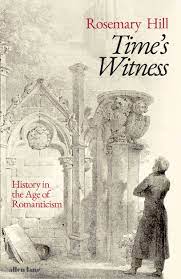 We still tend to dismiss the antiquary as the kind of uninspired collector of information embodied by George Eliot’s ossified Casaubon. To the gentlemen historians of the Enlightenment, they were tasteless provincial nobodies (in other words, they lacked the means for a grand tour), whose interest in the material remains of the past ranged from the dull to the downright insanitary. To the 19th-century professionals who succeeded them, they were an amateurish embarrassment, whose contributions to knowledge were rarely acknowledged, even (or especially) when they provided the basis for later work. In Time’s Witness, a history of history in the Romantic age, Hill launches a rehabilitation. Taking her ‘impetus’ from Hugh Trevor-Roper’s implication in ‘The Romantic Movement and the Study of History’ that the development of the discipline fell into abeyance between the towering figures of the 18th century (Hume, Gibbon, Robertson) and the 19th (Macaulay, Michelet, Ranke), she contends that the study of the past during those years was stewarded by exactly these much-maligned endeavourers.
We still tend to dismiss the antiquary as the kind of uninspired collector of information embodied by George Eliot’s ossified Casaubon. To the gentlemen historians of the Enlightenment, they were tasteless provincial nobodies (in other words, they lacked the means for a grand tour), whose interest in the material remains of the past ranged from the dull to the downright insanitary. To the 19th-century professionals who succeeded them, they were an amateurish embarrassment, whose contributions to knowledge were rarely acknowledged, even (or especially) when they provided the basis for later work. In Time’s Witness, a history of history in the Romantic age, Hill launches a rehabilitation. Taking her ‘impetus’ from Hugh Trevor-Roper’s implication in ‘The Romantic Movement and the Study of History’ that the development of the discipline fell into abeyance between the towering figures of the 18th century (Hume, Gibbon, Robertson) and the 19th (Macaulay, Michelet, Ranke), she contends that the study of the past during those years was stewarded by exactly these much-maligned endeavourers.
more here.
Tuesday, June 1, 2021
“I see fiction as restoring to the world some of its actual complexity”: An Interview with Gish Jen
Carole Burns in Ploughshares:
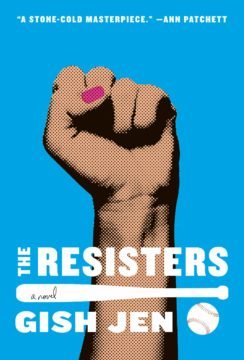 For more than thirty years now, Gish Jen has been writing fiction that explores the American landscape while ranging across any boundaries expectations about literary fiction might try to impose: her five novels and many short stories are literary and entertaining; funny and serious; rich in characters with stories to tell. Whether she’s writing from the point of view of a Chinese American teenager in a primarily Jewish suburb, as in Mona in the Promised Land (1996), or the sharply observant and comic Hattie Wong in World and Town (2010), Jen creates characters who explore not just what it is to be American, but what it is to be human.
For more than thirty years now, Gish Jen has been writing fiction that explores the American landscape while ranging across any boundaries expectations about literary fiction might try to impose: her five novels and many short stories are literary and entertaining; funny and serious; rich in characters with stories to tell. Whether she’s writing from the point of view of a Chinese American teenager in a primarily Jewish suburb, as in Mona in the Promised Land (1996), or the sharply observant and comic Hattie Wong in World and Town (2010), Jen creates characters who explore not just what it is to be American, but what it is to be human.
As I was reading The Resisters (2020), her most recent novel, it felt, to me, like Jen’s most blatantly political work of fiction—and ostensibly it is. Set in a futuristic dystopia called “AutoAmerica,” its characters are beset by all the problems wrought by the failure of today’s governments to tackle the pressing issues of our time: climate change, inequality based on race and income, automation and resulting job losses, and the convenience of technology vs. privacy. Begun ten months after Trump took office, this dystopia, like most dystopias, is clearly a reflection of our contemporary world. It’s not only a novel about a community of resisters fighting the racist, classist, and environmentally unsound structures of their society—the book is itself a piece of resistance.
How much, I wondered, was it influenced by the nonfiction work she’d published since her previous novel?
More here.
Sean Carroll’s Mindscape Podcast: Lee Smolin on Time, Philosophy, and the Nature of Reality
Sean Carroll in Preposterous Universe:
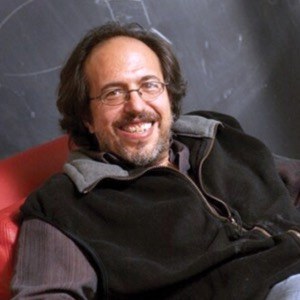 The challenge to a theoretical physicist pushing beyond our best current theories is that there are too many ways to go. What parts of the existing paradigm do you keep, which do you discard, and why make those choices? Among today’s theorists, Lee Smolin is unusually reflective about what principles should guide us in the construction of new theories. And he is happy to suggest radical revisions to well-established ideas, in areas from the nature of time to the workings of quantum mechanics. We talk about time, the universe, the role of philosophy, a new picture of spacetime, and the future of physics.
The challenge to a theoretical physicist pushing beyond our best current theories is that there are too many ways to go. What parts of the existing paradigm do you keep, which do you discard, and why make those choices? Among today’s theorists, Lee Smolin is unusually reflective about what principles should guide us in the construction of new theories. And he is happy to suggest radical revisions to well-established ideas, in areas from the nature of time to the workings of quantum mechanics. We talk about time, the universe, the role of philosophy, a new picture of spacetime, and the future of physics.
More here.
Here’s to my lovely, incandescent relationship with alcohol
Anandi Mishra in Psyche:
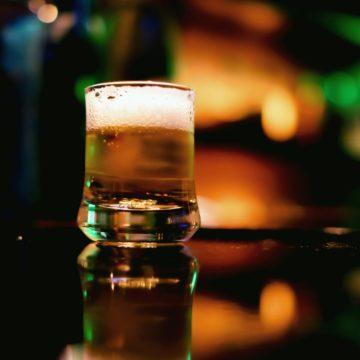 The first time I drank alcohol, it was red rum straight from a quarter bottle – riding pillion as my boyfriend took us around a secluded part of the city of Lucknow, in provincial northern India. It was spring 2010, I was in the third year of law school, and 80 kilometres away from my hometown. I’d told him that I wanted to ‘enjoy a drink’ with him, and he’d obliged – though, at 20, I was still far from the contours of knowing how to enjoy drinking. I wanted to experience the high that came with it, but my boyfriend wanted me to learn the lesson of my life.
The first time I drank alcohol, it was red rum straight from a quarter bottle – riding pillion as my boyfriend took us around a secluded part of the city of Lucknow, in provincial northern India. It was spring 2010, I was in the third year of law school, and 80 kilometres away from my hometown. I’d told him that I wanted to ‘enjoy a drink’ with him, and he’d obliged – though, at 20, I was still far from the contours of knowing how to enjoy drinking. I wanted to experience the high that came with it, but my boyfriend wanted me to learn the lesson of my life.
As he rode his Yamaha around, I took big swigs of the dark liquid. He’d given me a Cadbury bar to wipe away the bitter aftertaste of the rum. I finished almost the entire quarter like that: one swig rum, one bite of chocolate. What ensued were hours of blackout. I remember waking up at around dinnertime in my hostel room, flanked by friends and stuck in vomit-caked bedding.
I hadn’t realised what my boyfriend intended to accomplish that evening. Two days later, still arising out of the fog, I remember him laughing at my face. I felt small and cheated, and vowed never to drink again. But moving to Delhi a few years later, where I worked a tedious job as a junior associate at the High Court of Delhi, I discovered a different side to alcohol.
More here.
Alasdair MacIntyre: Moral Relativisms Reconsidered
Europas & Bulls
The Editors at The European Review of Books:
 Does anything in this sprawling catalog of rewritten myth redeem the figure of Europa, for our purposes? Will these contradictory lineages be summoned, however dimly, in our readers’ minds? Stuart Hall acknowledged that the myth could be read in emancipatory or pluralistic ways, but was anyone really doing it? “The figure is certainly not being used,” he concluded, “to remind contemporaries that much of what we now think of as Europe’s achievements were originally external to Europe and had non-European, Asian, African and Islamic roots.” Yet Hall’s critique is itself canonical now, at least in some circles, and the myth can be activated accordingly. In Citizens of Nowhere: How Europe Can Be Saved from Itself (2018), Lorenzo Marsili and Niccolo Milanese can invoke a postcolonial, postnational Europa as a matter of course.
Does anything in this sprawling catalog of rewritten myth redeem the figure of Europa, for our purposes? Will these contradictory lineages be summoned, however dimly, in our readers’ minds? Stuart Hall acknowledged that the myth could be read in emancipatory or pluralistic ways, but was anyone really doing it? “The figure is certainly not being used,” he concluded, “to remind contemporaries that much of what we now think of as Europe’s achievements were originally external to Europe and had non-European, Asian, African and Islamic roots.” Yet Hall’s critique is itself canonical now, at least in some circles, and the myth can be activated accordingly. In Citizens of Nowhere: How Europe Can Be Saved from Itself (2018), Lorenzo Marsili and Niccolo Milanese can invoke a postcolonial, postnational Europa as a matter of course.
more here.
Yi Yi Through Time and Space
Bryan Washington at The Current:
 I first watched Yi Yi on a busted cassette tape, in my small Texas town, rented from a Blockbuster behind a rice field and a pharmacy. If you were a high schooler growing up just outside of Houston and you weren’t throwing a football or running cross-country, then you could hardly call yourself busy. So I’d taken to scanning the collection of foreign films in the back of the rental store. Sometimes I’d bring a few home. And one day, at the end of my pursuit of something I’ve long since forgotten (Police Story, maybe, or Shogun Assassin, if I was feeling brave), Edward Yang’s portrait of a family navigating an increasingly globalized Taipei is what I ended up with.
I first watched Yi Yi on a busted cassette tape, in my small Texas town, rented from a Blockbuster behind a rice field and a pharmacy. If you were a high schooler growing up just outside of Houston and you weren’t throwing a football or running cross-country, then you could hardly call yourself busy. So I’d taken to scanning the collection of foreign films in the back of the rental store. Sometimes I’d bring a few home. And one day, at the end of my pursuit of something I’ve long since forgotten (Police Story, maybe, or Shogun Assassin, if I was feeling brave), Edward Yang’s portrait of a family navigating an increasingly globalized Taipei is what I ended up with.
It took me a minute to actually watch it. I kept putting it off. The running time seemed entirely too long. But one weekend, well past midnight, I stumbled into the family game room, under a too-large blanket, and my American suburban evening melded with the muted pastels of Yang’s Taiwan.
more here.
Gershom Scholem – What is Jewish Mysticism?
Serious Thoughts About Science in an Entertaining Package
Dwight Garner in The New York Times:
 By the time Edward St. Aubyn completed the last of his Patrick Melrose novels in 2012, it was clear that a new animal had approached the watering hole of fiction in England. This animal was of a species thought to have largely gone extinct: the anatomist of the remote upper classes. The subject of these novels put St. Aubyn in an invidious position. His arrival was resisted. To a certain kind of reader, the notion of consuming five novels about extreme privilege — heavy manners, long bones — seemed about as enjoyable as expressing a dog’s anal glands. But St. Aubyn could write: He could really write. He blended woe with wit; his ironies were fierce and finely tuned. The details were precise because St. Aubyn actually had the British upper-class background that, as Clive James noted, the snobbier Evelyn Waugh longed for. St. Aubyn’s new book, “Double Blind,” is an entertainment on scientific themes: brain-mapping, biochemistry, botany, immunotherapy, schizophrenia and the ethics of placebos (hence the book’s title), among other topics.
By the time Edward St. Aubyn completed the last of his Patrick Melrose novels in 2012, it was clear that a new animal had approached the watering hole of fiction in England. This animal was of a species thought to have largely gone extinct: the anatomist of the remote upper classes. The subject of these novels put St. Aubyn in an invidious position. His arrival was resisted. To a certain kind of reader, the notion of consuming five novels about extreme privilege — heavy manners, long bones — seemed about as enjoyable as expressing a dog’s anal glands. But St. Aubyn could write: He could really write. He blended woe with wit; his ironies were fierce and finely tuned. The details were precise because St. Aubyn actually had the British upper-class background that, as Clive James noted, the snobbier Evelyn Waugh longed for. St. Aubyn’s new book, “Double Blind,” is an entertainment on scientific themes: brain-mapping, biochemistry, botany, immunotherapy, schizophrenia and the ethics of placebos (hence the book’s title), among other topics.
…Here he is on neuroscience and my day job: “What part of the brain lights up when the reader first encounters Mr. Darcy and his odious pride? Can literary criticism afford to ignore what is happening to the reader’s amygdala when Elizabeth Bennet rejects his first proposal? It is a truth universally acknowledged that any topic in search of a reputation for seriousness must be in want of neuroimaging.”
More here.
Duetting songbirds ‘mute’ the musical mind of their partner to stay in sync
From Phys.Org:
 Art Garfunkel once described his legendary musical chemistry with Paul Simon, “We meet somewhere in the air through the vocal cords … .” But a new study of duetting songbirds from Ecuador, the plain-tail wren (Pheugopedius euophrys), has offered another tune explaining the mysterious connection between successful performing duos. It’s a link of their minds, and it happens, in fact, as each singer mutes the brain of the other as they coordinate their duets. In a study published May 31 in Proceedings of the National Academy of Sciences, a team of researchers studying brain activity of singing male and female plain-tailed wrens has discovered that the species synchronizes their frenetically paced duets, surprisingly, by inhibiting the song-making regions of their partner’s brain as they exchange phrases.
Art Garfunkel once described his legendary musical chemistry with Paul Simon, “We meet somewhere in the air through the vocal cords … .” But a new study of duetting songbirds from Ecuador, the plain-tail wren (Pheugopedius euophrys), has offered another tune explaining the mysterious connection between successful performing duos. It’s a link of their minds, and it happens, in fact, as each singer mutes the brain of the other as they coordinate their duets. In a study published May 31 in Proceedings of the National Academy of Sciences, a team of researchers studying brain activity of singing male and female plain-tailed wrens has discovered that the species synchronizes their frenetically paced duets, surprisingly, by inhibiting the song-making regions of their partner’s brain as they exchange phrases.
Researchers say that the auditory feedback exchanged between wrens during their opera-like duets momentarily inhibits motor circuits used for singing in the listening partner, which helps link the pair’s brains and coordinate turn-taking for a seemingly telepathic performance. The study also offers fresh insight into how humans and other cooperative animals use sensory cues to act in concert with one another. “You could say that timing is everything,” said Eric Fortune, co-author of the study and neurobiologist at New Jersey Institute of Technology’s Department of Biological Sciences. “What these wrens have shown us is that for any good collaboration, partners need to become ‘one’ through sensory linkages. The take-home message is that when we are cooperating well… we become a single entity with our partners.”
More here.
Tuesday Poem
Question
Body my house
my home my hound
what will I do
when you have fallen
Where will I sleep
How will I ride
What will I hunt
Where can I go
without my mount
all eager and quick
How will I know
in thicket ahead
is danger or treasure
when Body my good
bright dog is dead
How will it be
to lie in the sky
without roof or door
and wind for an eye
With cloud for shift
how will I hide?
by May Swenson
from A Book of Luminous Things
Houghton Mifflin, 1996
Sunday, May 30, 2021
To Err Is Humean
Kieran Setiya in the Los Angeles Review of Books:
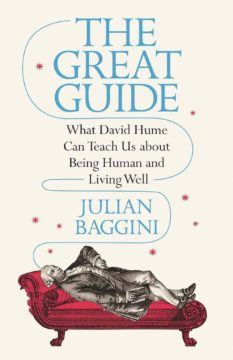 Philosophy has a vexed relationship with the business of self-help. On the one hand, philosophers offer systematic visions of how to live; on the other hand, these visions are meant to be argued with, not deferred to or chosen off the rack. Though it runs deep, this tension has not slowed the flood of titles, published in the last few years, that take a dead philosopher as a guide to life. These books will teach you How to Be a Stoic, How to Be an Epicurean, and How William James Can Save Your Life; you can take The Socrates Express to Aristotle’s Way and go Hiking with Nietzsche.
Philosophy has a vexed relationship with the business of self-help. On the one hand, philosophers offer systematic visions of how to live; on the other hand, these visions are meant to be argued with, not deferred to or chosen off the rack. Though it runs deep, this tension has not slowed the flood of titles, published in the last few years, that take a dead philosopher as a guide to life. These books will teach you How to Be a Stoic, How to Be an Epicurean, and How William James Can Save Your Life; you can take The Socrates Express to Aristotle’s Way and go Hiking with Nietzsche.
The latest victim, or beneficiary, of this popular treatment is David Hume, a giant of the Scottish Enlightenment widely regarded as the greatest philosopher to write in English. Hume gave birth to a slew of skeptical problems, about personal identity, substance, and causality; he forged a naturalistic moral theory that gave a central role to human sympathy; and, in his Dialogues Concerning Natural Religion (1779), he wrote what Isaiah Berlin called “perhaps the most remarkable treatise upon this subject ever composed.” Hume was a pioneer in the nascent field of psychology — anticipating such discoveries as the “recency effect,” hyberbolic discounting, the role of heuristics in cognition, and the “fundamental attribution error” — as well as a brilliant essayist who published the best-selling work of history in Britain before Edward Gibbon’s Decline and Fall of the Roman Empire (1776–’89). (Gibbon called Hume “the Tacitus of Scotland.”) Even a hater like James Boswell, who was horrified by Hume’s irreligion, called him “the greatest Writer in Britain.” In The Great Guide, Julian Baggini offers a bright, engaging, reliable introduction to Hume’s life and work, extracting an extensive list of Humean maxims and aphorisms that make up an appendix to the book.
More here.
Amid a Pandemic, a Health Care Algorithm Shows Promise and Peril
Vishal Khetpal and Nishant Shah in Undark:
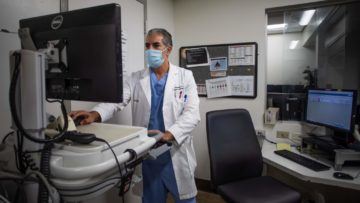
Last spring, physicians like us were confused. Covid-19 was just starting its deadly journey around the world, afflicting our patients with severe lung infections, strokes, skin rashes, debilitating fatigue, and numerous other acute and chronic symptoms. Armed with outdated clinical intuitions, we were left disoriented by a disease shrouded in ambiguity.
In the midst of the uncertainty, Epic, a private electronic health record giant and a key purveyor of American health data, accelerated the deployment of a clinical prediction tool called the Deterioration Index. Built with a type of artificial intelligence called machine learning and in use at some hospitals prior to the pandemic, the index is designed to help physicians decide when to move a patient into or out of intensive care, and is influenced by factors like breathing rate and blood potassium level. Epic had been tinkering with the index for years but expanded its use during the pandemic. At hundreds of hospitals, including those in which we both work, a Deterioration Index score is prominently displayed on the chart of every patient admitted to the hospital.
More here.
Why Economics Is Failing Us
Tyler Cowen at Bloomberg:
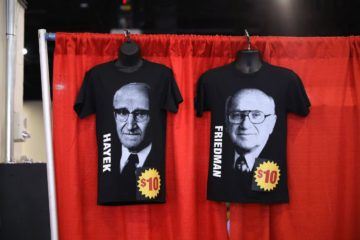 Economics is one of the better-funded and more scientific social sciences, but in some critical ways it is failing us. The main problem, as I see it, is standards: They are either too high or too low. In both cases, the result is less daring and creativity.
Economics is one of the better-funded and more scientific social sciences, but in some critical ways it is failing us. The main problem, as I see it, is standards: They are either too high or too low. In both cases, the result is less daring and creativity.
Consider academic research. In the 1980s, the ideal journal submission was widely thought to be 17 pages, maybe 30 pages for a top journal. The result was a lot of new ideas, albeit with a lower quality of execution. Nowadays it is more common for submissions to top economics journals to be 90 pages, with appendices, robustness checks, multiple methods, numerous co-authors and every possible criticism addressed along the way.
There is little doubt that the current method yields more reliable results. But at what cost? The economists who have changed the world, such as Adam Smith, John Maynard Keynes or Friedrich Hayek, typically had brilliant ideas with highly imperfect execution. It is now harder for this kind of originality to gain traction.
More here.
The mystery of a trailblazing archeologist who faked his own death is finally unravelled
William Dalrymple in The Guardian:
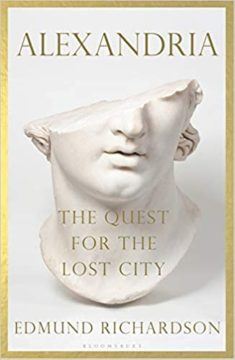 In the hot summer of 1840, the young orientalist Henry Rawlinson arrived in Karachi and began anxiously searching for his mentor, the pioneering archaeologist of Afghanistan, Charles Masson. The rumours he had heard profoundly alarmed him.
In the hot summer of 1840, the young orientalist Henry Rawlinson arrived in Karachi and began anxiously searching for his mentor, the pioneering archaeologist of Afghanistan, Charles Masson. The rumours he had heard profoundly alarmed him.
Rawlinson was a rising star: he had recently made his name by helping decipher ancient Persian cuneiform script; but he looked up to Masson as a far greater scholar. For more than a decade, Masson had wandered, alone and on foot, exploring Afghanistan, collecting coins and inscriptions, studying ruins and making sketches.
The bilingual Hellenistic coins Masson had sent to Calcutta, minted by men with names such as Pantaleon, King of North India and Demetrius Dharmamita, had been like miniature Rosetta stones. They had provided the key for scholars to understand the profoundly hybrid, Greco-Buddhist ancient history of the region. The coins of Heliochles of Balkh were typical: they showed a Roman profile on one side – large nose, imperial arrogance in the eyes – but on the reverse Heliochles chose as his symbol a humped Indian Brahmini bull.
More here.
